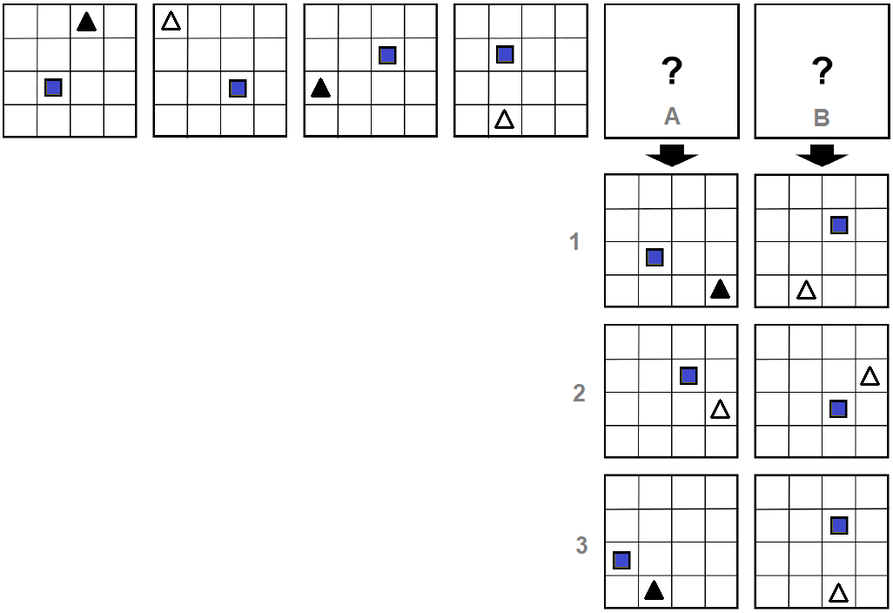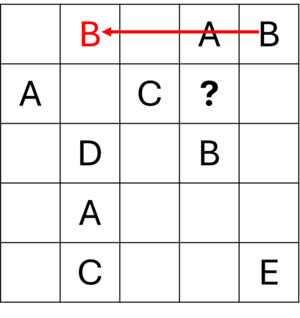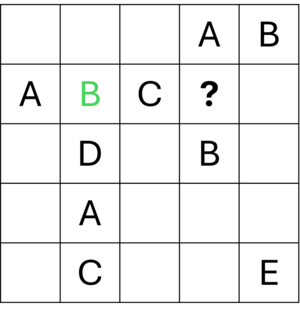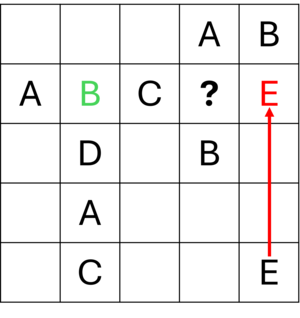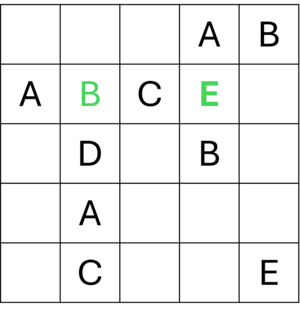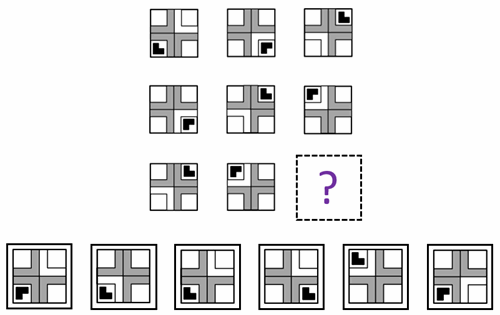 TestAS: Everything You Need to Know
TestAS: Everything You Need to Know
The TestAS is an aptitude test for international students planning to study in Germany. It consists of a general cognitive test and subject-specific modules. On this page, we offer comprehensive online preparation for the TestAS, including digital practice and test formats. Learn everything you need to know about the TestAS and how you can optimally prepare online.
- Prefer German? Visit the German version of this page →
- Diese Informationen sind auch auf Deutsch verfügbar. Zur deutschen Version wechseln →
Still have questions? Check our FAQ section at the end of this page for answers to common queries.
When coming to Germany from abroad to study, the TestAS is one of the most important exams. Many German universities use it as a criterion for admission to assess the academic aptitude of international applicants.
Note: While the TestAS isn't required by every university, it can significantly enhance your chances of admission or simplify the admissions process.
A strong TestAS score can especially increase your admission chances in competitive degree programs. Some universities award bonus points for excellent TestAS results, positively impacting your overall evaluation.
You can choose between two test formats:
- The TestAS digital (also known as TestAS online)
- The paper-based TestAS
Both formats assess your academic skills but differ in execution and flexibility. You can take the TestAS in either German or English, and you select your preferred language during registration.
Important: To successfully complete the TestAS, you should have at least B1–B2 language proficiency in German or English.
Each format is offered multiple times a year worldwide at certified test centers.
Upcoming registration deadlines and test dates:
| Test Date | Registration Period | Format |
| April 26, 2025 | 01/06/2025 - 03/14/2025 | TestAS paper-based |
| June 17, 2025 | 01/06/2025 - 06/04/2025 | TestAS digital |
| October 25, 2025 | 01/06/2025 - 09/15/2025 | TestAS paper-based |
| November 20, 2025 | 01/06/2025 - 11/10/2025 | TestAS digital |
| February 24, 2026 | 09/01/2025 - 01/19/2026 | TestAS paper-based |
| March 19, 2026 | 11/02/2025 - 03/07/2026 | TestAS digital |
If you're unsatisfied with your result, you can retake the TestAS as often as needed.
For more details and registration, please visit the official TestAS registration portal. There, you can also find a search feature to locate available test centers in your country.
Now, let's look at both test versions of the TestAS in detail:
Digital TestAS: Procedure and Requirements
The digital TestAS is conducted entirely on a computer at a test center and takes approximately 3.5 hours, consisting of two main parts:
1. Core Module (90 minutes)
The first part assesses general cognitive skills relevant to all fields of study, including:
- Figural Sequences:
Identify rules and complete graphical patterns. - Mathematical Equations:
Solve equations with multiple unknowns. - Latin Squares:
Insert letters into logical arrangements, similar to Sudoku.
A 30-minute break follows the core module.
2. Subject Module (90 minutes)
The second part tests skills specifically related to your desired field of study. Available subject modules:
- Humanities, Cultural Studies, and Social Sciences
- Life Sciences
- Mathematics, Computer Science, and Natural Sciences
- Engineering
- Economics
- Medicine
You answer multiple-choice questions based on field-specific texts and tasks.
Important: Taking notes is not permitted during the digital TestAS.
The test is supervised at certified test centers, fully computer-based, and results are available online within 2–3 weeks.
To give you a better idea of what to expect, here is one example task per section of the digital core module:
TestAS Sample Test Questions for the Digital Core Module
Duration: 25 minutes
Scope: 20 tasks
You will see a sequence of six matrices, with the first four given. For the last two matrices, you must choose the correct option from two possibilities to complete the sequence logically.
Each matrix contains up to four figures, which change their position, color, or orientation according to specific rules. Your task is to identify these rules and select the correct figures.
Possible movements of the figures include vertical, horizontal, or diagonal (a diagonal movement does not deviate from its path). Figures that reach a border either move along the frame or bounce off it.
Duration: 25 minutes
Scope: 20 tasks
You will be given two to four equations with two to four unknowns. Your task is to determine the correct values of the unknowns. All values range from 1 to 20.
By cleverly rearranging and combining the equations, you can determine all the required values.
Duration: 25 minutes
Scope: 20 tasks
This test works similarly to Sudoku: You are given a 5×5 grid in which you must place the letters A to E. Each letter may appear only once per row and per column.
Some cells in the grid are already filled with letters, while one cell contains a question mark "?". Your task is to determine the correct letter for that cell.
Paper-based TestAS: Procedure and Requirements
The paper-based TestAS lasts about 4.5 hours and consists of two main parts:
1. Core Test (110 minutes)
This part assesses general cognitive abilities through tasks in:
- Solving Quantitative Problems:
Practical math problems - Inferring Relationships:
Solve linguistic analogies - Completing Patterns:
Identify geometric patterns - Continuing Number Sequences:
Identify numerical patterns
Answers and Aids:
Answers are recorded on a provided answer sheet. Notes on provided scratch paper are allowed; dictionaries or calculators are prohibited.
2. Subject Module (~145–150 minutes)
This section tests subject-specific skills relevant to your desired field. Available subject modules:
- Humanities, Cultural Studies, and Social Sciences
- Engineering
- Mathematics, Computer Science, and Natural Sciences
- Economics
The tasks are multiple-choice questions.
Note: Your university specifies the required subject module.
Here are example tasks from the paper-based core module:
TestAS Sample Test Questions for the Paper-based Core Module
Duration: 45 minutes
Scope: 22 tasks
You will receive short word problems based on everyday situations, which you can solve using basic mathematical skills. Each question has four answer options, from which you must select the correct one and mark it on the answer sheet.
Duration: 10 minutes
Scope: 22 tasks
This task focuses on verbal analogies. You will see two word pairs that share the same logical relationship. In both pairs, two words are missing, and you must select the correct words from four answer choices to complete the analogy logically.
Duration: 20 minutes
Scope: 22 tasks
In this task type, you will be given a 3×3 grid containing geometric shapes. The bottom-right field is empty and marked with a question mark ( ? ). Your task is to identify the rule that determines how the shapes are arranged and select the correct shape from six options.
Tip: The pattern rule may follow a horizontal, vertical, or combined direction.
Duration: 20 minutes
Scope: 22 tasks
You will be shown a series of seven numbers. The eighth number is missing and marked with a question mark ( ? ). Your task is to identify the rule governing the sequence and enter the correct answer on the answer sheet by marking the boxes corresponding to the correct digits.
Tip: Each digit appears only once in the answer. Double digits such as "55" or "99" do not occur.
Frequently Asked Questions about TestAS
Which German Universities Use TestAS for Admission?
The following table provides an overview of selected German universities that use or require the TestAS as part of their admission process.
Please note that this list is not exhaustive, and all information is provided without guarantee. For official and up-to-date details, always check the respective universities' websites.
| University | TestAS Requirement |
|---|---|
| University of Cologne | Mandatory for all bachelor's applicants (non-EU) – TestAS certificate (core and subject-specific module test) required with minimum percentage thresholds depending on the faculty. |
| RWTH Aachen | Mandatory for Medicine/Dentistry (TestAS must be taken in German; required score in the top 20%) and conditionally required for other bachelor's programs – if the Abitur grade is worse than 2.5 (German scale), TestAS is needed as compensation. |
| University of Hamburg | Optional – accepted for bonus points in all study programs. High TestAS scores provide bonus points for admission (extra points based on the score). |
| Otto von Guericke University Magdeburg | Mandatory for Medicine/Dentistry – TestAS (digital, medical subject module in German) is required; TestAS results account for about 49% of the selection process. |
| University of Bielefeld | Optional – serves as an alternative entrance exam for applicants with an indirect HZB (Studienkolleg required). A TestAS standard score ≥90 in core and subject module can replace the Studienkolleg, allowing direct application. |
| University of Greifswald | Mandatory for Medicine/Dentistry – applicants must achieve at least 100 points in the core TestAS. TestAS results are included in the selection formula alongside the Abitur grade. |
| Johannes Gutenberg University Mainz | Optional – accepted as a bonus for all study programs. TestAS core and module scores can improve the converted Abitur grade by up to 0.5, with a maximum overall improvement of 1.0. |
| Heidelberg University | Mandatory for Medicine, Dentistry, Pharmacy – TestAS results are part of the university's selection criteria (additional points in the ranking). |
| University of Ulm | Mandatory for Medicine/Dentistry – TestAS (subject module "Mathematics, Computer Science & Natural Sciences" in German) is required and constitutes 50% of the selection ranking. |
| Albert Ludwig University of Freiburg | Optional – considered in the selection process for Medicine/Dentistry. High TestAS scores provide significant bonus points. |
| Georg August University of Göttingen | Mandatory for Medicine/Dentistry – TestAS (core + one module from STEM/Medicine/Life Sciences) is a required part of the application. Only the module score counts for the bonus. |
| Martin Luther University Halle-Wittenberg | Optional – supports TestAS as a bonus to improve admission chances. A score above the 80th percentile in core and module improves the Abitur grade by 0.2 points. |
| University of Leipzig | Optional for all restricted-admission study programs – TestAS can improve the HZB grade by up to 0.4 points. Achieving at least the 90th percentile in core or module earns a 0.2-point bonus; high scores in both parts can result in a total bonus of 0.4. |
| Westphalian Wilhelms University Münster | Optional – used to support admissions in Medicine/Dentistry. Münster applies a tiered bonus system based on the TestAS *STEM module* score. |
| Goethe University Frankfurt | Mandatory for Medicine, Dentistry, Pharmacy, and Biochemistry – Non-EU applicants must take TestAS (core + "Mathematics/Computer Science/Natural Sciences" module) in German. TestAS results make up 49% of the selection score. |
| Justus Liebig University Giessen | Mandatory for Medicine/Dentistry – TestAS core + "Mathematics/Computer Science/Natural Sciences" module required (can be taken in German or English). A bonus applies for high scores (above 80 points); the maximum bonus is awarded for scores ≥123. |
| Hannover Medical School (MHH) | Mandatory for Medicine/Dentistry – TestAS *"Mathematics/Computer Science/Natural Sciences"* module required (core is not used). Only the module score is considered in the evaluation, equally weighted with the Abitur; a score >126 is considered equivalent to a 1.0 Abitur grade. |
Note: Different universities handle multiple TestAS results differently. Always check directly with the university of your choice for specific policies.
How Does the TestAS Work?
The TestAS consists of two parts: a core test and a subject module.
The core test assesses general cognitive abilities relevant to all fields of study.
The subject module evaluates skills specific to your chosen field of study.
Both parts are taken back-to-back. You can choose to take the test in German or English. It is conducted under supervision in certified test centers and follows a multiple-choice format.
How Difficult Is the TestAS?
The TestAS is intentionally challenging to assess cognitive abilities such as analytical thinking and problem-solving skills.
The time pressure is high, making it difficult to answer all questions within the given time.
Thorough preparation and a good test-taking strategy can help you manage this pressure and achieve a strong score.
Important: You cannot pass or fail the TestAS. Instead, you receive a score that is relevant for university applications.
What Is a Good TestAS Score?
A good score is well above average, typically around a percentile rank of 70–80 or a standard score above 100.
Top scores (around 125+ in the paper-based test or 150+ in the digital test) significantly improve your chances of university admission.
How Can I Prepare for the TestAS?
Targeted preparation is essential to improve your chances on the TestAS.
Start with the official sample questions from the TestAS website to familiarize yourself with the question formats.
We will soon offer our specialized TestAS PrepPack™, which includes comprehensive online courses, practice tests, and detailed solutions to help you prepare effectively.
Time management is crucial - our practice exercises are designed to match the exact format and time limits of the real test.
More Frequently Asked Questions
TestAS stands for "Test für ausländische Studierende" (Test for Foreign Students). It is an aptitude test designed for international applicants applying to German universities.
Both versions (digital and paper-based) consist of: A core test, which assesses general cognitive abilities. A subject-specific module, which evaluates skills relevant to your chosen field of study.
- Digital TestAS: Approx. 3.5 hours (including a break)
- Paper-based TestAS: Around 4.5 to 5 hours, including breaks
The digital TestAS, also known as TestAS online, is the computer-based version of the TestAS (Test für ausländische Studierende). It assesses the academic aptitude of international applicants and is conducted entirely digitally at certified test centers.
The TestAS scores are given in standardized values (Paper-based TestAS: 70–130, Digital TestAS: 0–200). A score of 100 represents the average performance.
Digital TestAS: Results are available within approximately 2–3 weeks.
Paper-based TestAS: Results are available online after about 4 weeks.
The TestAS fee varies depending on the country and test center, ranging from approximately €130 to €160. The exact fee will be provided during registration.
You can take the TestAS as many times as you want. However, it is recommended to allow enough time between attempts for focused practice and improvement.
No, aids such as dictionaries or calculators are not allowed in the TestAS.
Paper-based TestAS: Notes are allowed, but only on the provided scratch paper.
Digital TestAS: Notes are not allowed.
